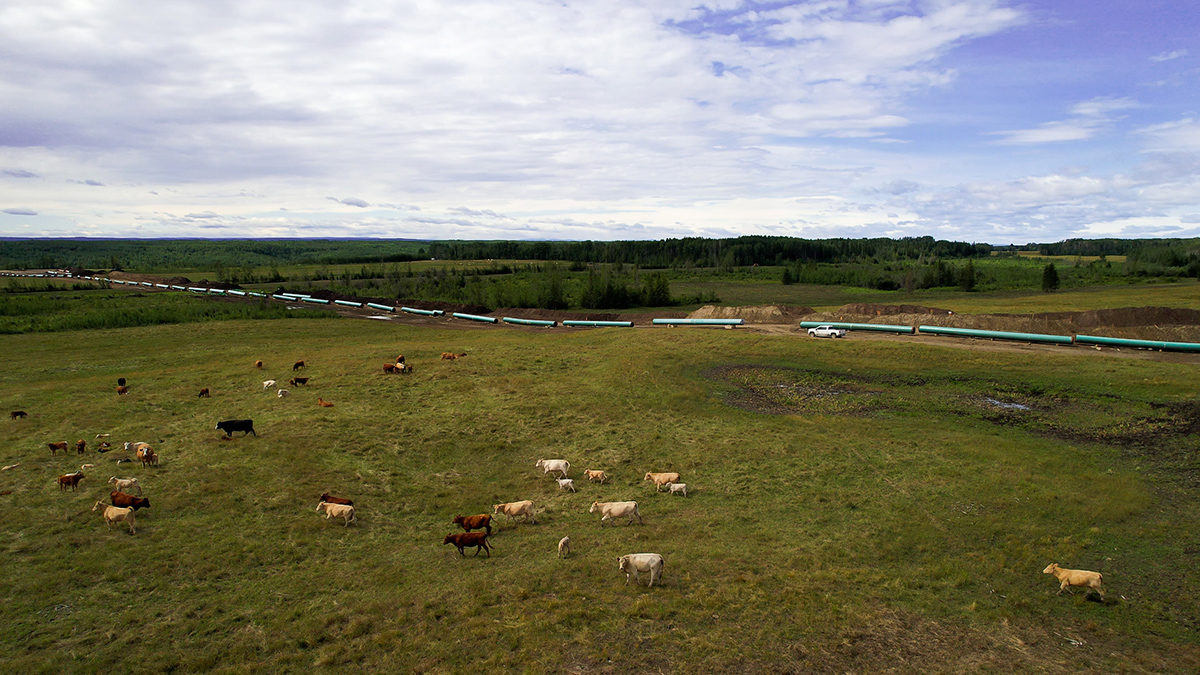“Extreme discounts” on western Canadian natural gas this summer may have cost producers more than $1 billion per month in revenue, according to RBN Energy. That means potentially millions less in government revenue for quality-of-life projects and services.
Without adequate pipeline capacity – or the ability to export liquefied natural gas (LNG) – Canadian prices took a dip into the negative while in the U.S. they reached their highest in over a decade.
Two producers – Tourmaline and Kelt Exploration – even temporarily shut-in production in Alberta and B.C. amid the price decline.
“Over the last two weeks, we again witnessed the AECO [Alberta natural gas price] market brutally disconnect from the rest of North America,” Darren Gee, CEO of Calgary-based natural gas producer Peyto Exploration and Development Corp., wrote in early September.
“With gas royalties priced off an AECO price that has recently been close to zero while the rest of North America basks in prices that are closer to $10, Alberta is missing out in a big way. Think of all the hospitals and doctors and nurses, the schools and teachers, the roads and infrastructure that those missed royalties could fund.”
Regulatory delays impacting pipeline progress
Among the root causes of the problem are delays in the federal regulatory process for expanding the Nova Gas Transmission Line (NGTL) system, Gee said.
Owned by TC Energy, NGTL is a key connection for gas production, primarily in Alberta and B.C., to markets in eastern Canada and the U.S.
Against the backdrop of rising global demand, western Canada’s natural gas production is increasing. But under the Canada Energy Regulator (CER)’s new processes, the pipeline system is struggling to keep up.
“NGTL had strived for and was successful in getting regulatory lead times down to 18 months or less for new facilities but the new regulatory regime under the CER has unfortunately increased that lead time to four years,” Gee said.
Thomas Liles, vice-president with Rystad Energy, says “the fundamental issue that’s been dogging western Canada over the last five years or so is that on one hand, there is pretty robust production growth. And then on the other hand, not enough sufficient pipe to accommodate it.”
Canada ‘deprived of fair market value’
The regulatory delays are of “deep concern” for Canadians, Alberta energy minister Sonya Savage and associate minister Dale Nally wrote in a letter to federal natural resources minister Jonathan Wilkinson in mid-September.
“Without explanation, for instance, Canada extended the deadline to approve the NGTL 2023 expansion project…likewise, the federal review processes for NGTL’s 2021 expansion project has resulted in an entire construction season lost, delaying critical access to markets, increasing costs, and further distressing AECO gas prices,” they wrote.
“Without expansion, our resources will continue to be deprived of fair market value, impacting natural gas producers, governments and Canadians alike.”
A light on the horizon for western Canada’s producers is LNG. The first project, LNG Canada, is expected to start shipping to Asian markets in 2025, followed by the smaller Woodfibre LNG project in 2027. Indigenous-led Cedar LNG and Ksi Lisims LNG are vying to start up in the same timeframe.
Without a Canadian LNG export terminal, at least two Canadian operators have signed deals to ship their gas on LNG tankers leaving from U.S. shores using North America’s pipeline connections.
But that doesn’t add the benefits that LNG projects within Canada’s borders could provide. For example, the Conference Board of Canada estimates that expanded Canadian LNG could support 96,550 direct, indirect and induced jobs annually across the country between 2020 and 2064.
LNG driving higher prices for U.S. producers
In the U.S. – which became the world’s largest LNG exporter in the first half of 2022 – producers are benefitting from higher prices internationally and at home.
According to GLJ, this August LNG sold in Japan and Korea averaged US$52.23 per MMbtu. Meanwhile, the U.S. benchmark Henry Hub in Louisiana averaged US$8.78, the highest price since 2008. In Canada, AECO in Alberta averaged US$4.08, and Station 2 sold in B.C. was even lower, at US$3.63.
“There is no question that LNG export demand has materially increased U.S. Henry Hub gas pricing, particularly during this time of extreme gas demand at any price in Europe,” says GLJ CEO Jodi Anhorn.
“Canadian gas is restricted by number of markets served and pipeline options. We have a limited number of major gas pipelines, which sell into generally well-served U.S. markets. And we do not have access to seaborn contracts, as we have no active LNG facilities.”
‘The rest of the world is moving ahead’
Even before Russia’s invasion of Ukraine, world LNG demand was expected to double to reach 700 megatonnes by 2040, driven by growing Asian economies looking to get off high emitting coal.
Canada should be working harder to get in on the action, according to the Business Council of B.C.
“While we dither endlessly and enact barriers to development, the rest of the world is moving ahead,” Denise Mullen, the council’s director of environment, sustainability and Indigenous relations, wrote in early September.
“The saga of LNG amounts to a truly epic Canadian policy and political failure, one that represents a significant lost economic and environmental opportunity for B.C. and Canada.”
The unaltered reproduction of this content is free of charge with attribution to Canadian Energy Centre Ltd.
